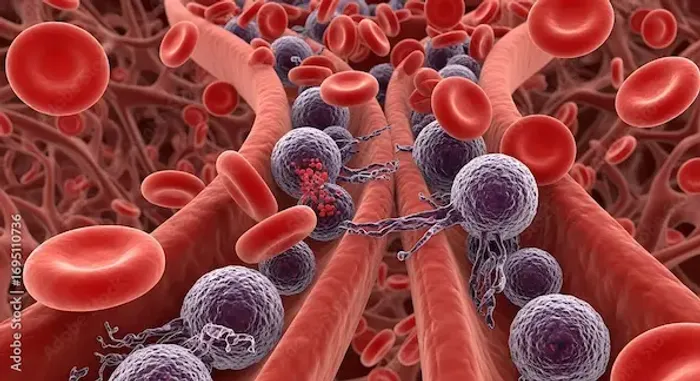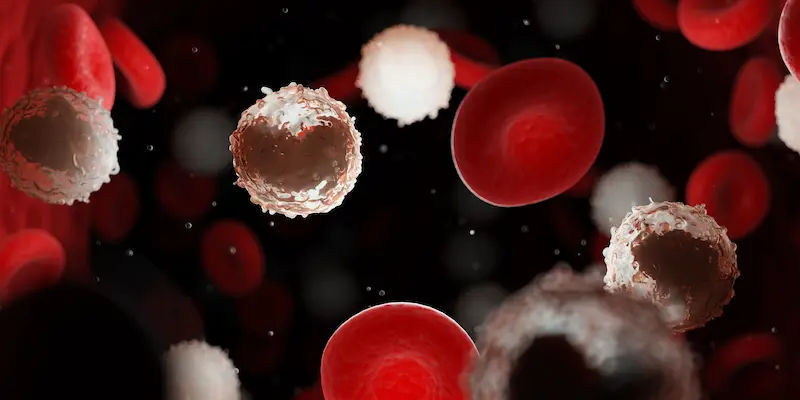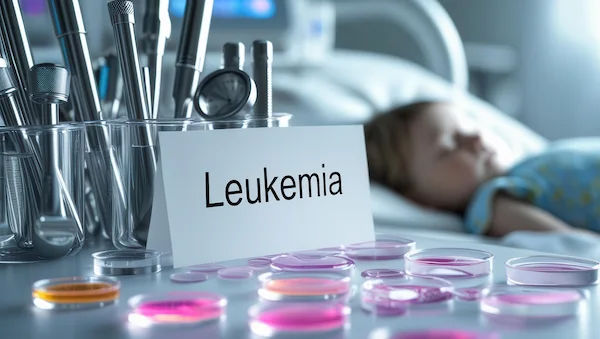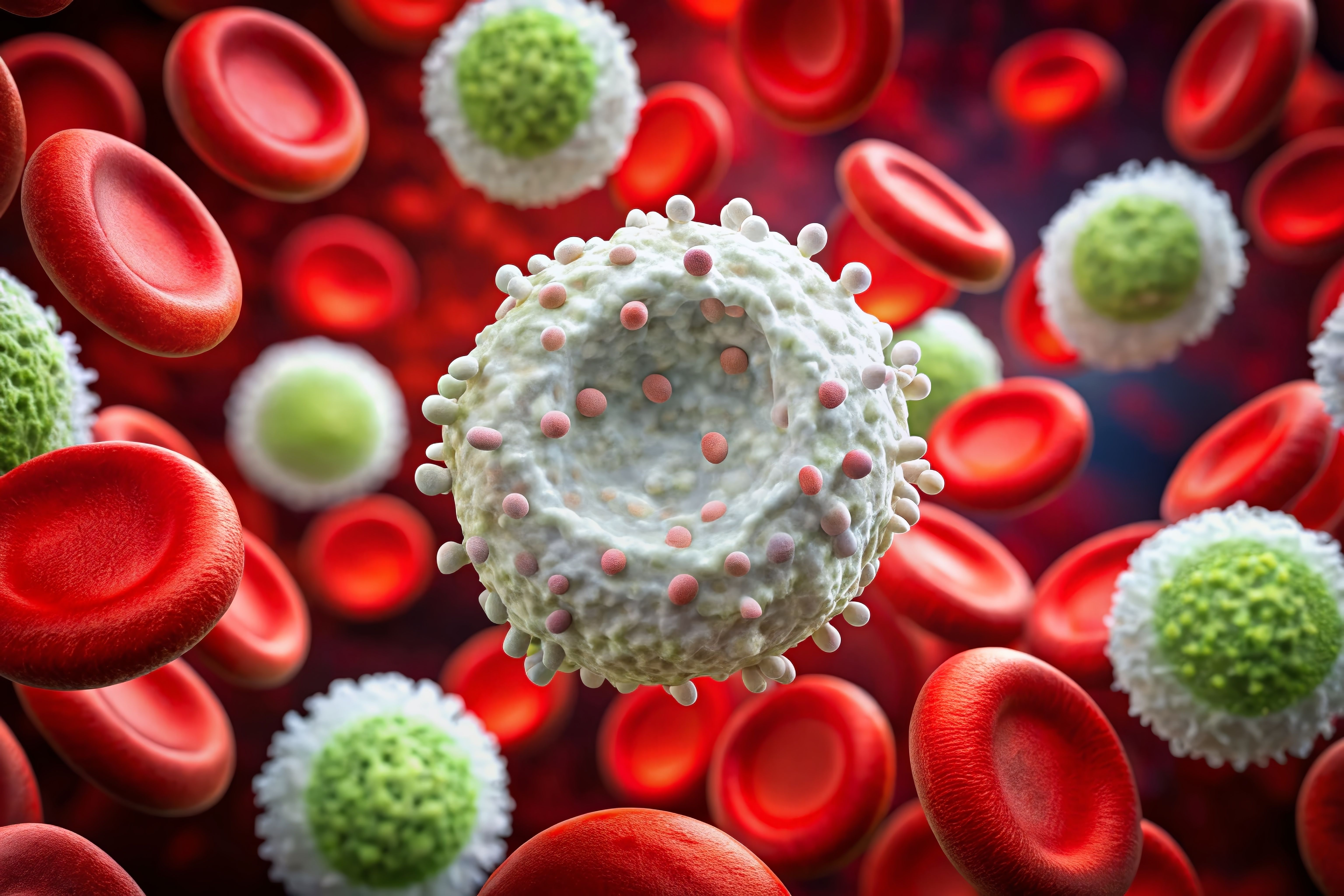Guide to Leukaemia Diagnosis And Treatment Options
Learn about leukaemia symptoms, diagnosis, and modern treatments including chemotherapy, targeted therapy, and immunotherapy. Empower yourself with knowledge.

Written by Dr. Dhankecha Mayank Dineshbhai
Reviewed by Dr. Rohinipriyanka Pondugula MBBS
Last updated on 25th Sep, 2025

Introduction
Receiving a potential leukaemia diagnosis can be an overwhelming and frightening experience. The term itself often brings a wave of uncertainty. However, knowledge is a powerful tool. This guide aims to demystify leukaemia, walking you through everything from recognising early signs to understanding the sophisticated diagnostic process and the array of modern treatment options available today. Our goal is to empower you and your loved ones with clear, compassionate information, turning confusion into clarity and fear into focused action. We will explore the different types of leukaemia, explain how doctors confirm a diagnosis, and detail the latest advancements in therapy that are improving outcomes for patients every day.
Recognising the Signs: Common Symptoms of Leukaemia
Leukaemia symptoms often arise because the cancerous bone marrow cells crowd out the production of healthy blood cells. These symptoms can be vague and mimic those of common illnesses like the flu, which is why professional medical evaluation is crucial.
General Symptoms Caused by High White Blood Cell Counts
When the bone marrow produces excessive abnormal white blood cells (blasts), it can lead to systemic symptoms. These include persistent fatigue, unexplained fever or night sweats, unintentional weight loss, and loss of appetite. Some individuals may also experience pain or a feeling of fullness under the ribs on the left side, caused by an enlarged spleen (splenomegaly).
Symptoms Related to Low Blood Cell Counts (Cytopenias)
This is a key aspect of leukaemia symptoms. The lack of healthy blood cells manifests in specific ways:
- Low Red Blood Cells (Anaemia): Causes persistent fatigue, weakness, pale skin, shortness of breath, and dizziness.
- Low Healthy White Blood Cells (Neutropenia): Increases susceptibility to infections, fevers, and frequent illnesses.
- Low Platelets (Thrombocytopenia): Leads to easy bruising, bleeding gums, frequent nosebleeds, and the appearance of tiny red spots on the skin (petechiae).
When Should You Consult a Doctor?
It's essential to listen to your body. If you experience a combination of these symptoms—especially fatigue, easy bruising, persistent fevers, or unexplained weight loss—that last for more than two weeks, it is important to seek medical advice. If symptoms persist, consult a doctor online with Apollo24|7 for further evaluation. Early consultation can lead to a timely diagnosis, which is often critical for successful treatment.
Consult a Haematologist-Oncologist for the best advice
The Four Main Types of Leukaemia
Leukaemia is primarily classified based on the speed of progression (acute or chronic) and the type of white blood cell affected (lymphocytic or myelogenous). This classification is fundamental as it dictates the treatment approach.
Acute Lymphoblastic Leukaemia (ALL)
ALL is an aggressive cancer of the lymphoid cells. It progresses rapidly and requires immediate treatment. It is the most common type of leukaemia in young children, though it can also occur in adults. Treatment typically involves intensive chemotherapy.
Acute Myeloid Leukaemia (AML)
AML is a fast-growing cancer of the myeloid cells. It affects both adults and children and is the most common acute leukaemia in adults. The treatment for AML has evolved significantly, with new targeted therapy drugs and improved chemotherapy regimens.
Chronic Lymphocytic Leukaemia (CLL)
CLL is a slow-growing cancer of the lymphoid cells. It primarily affects older adults. Many people with CLL may not need treatment for years; an approach known as "watchful waiting" is often adopted initially. When treatment is required, it often involves targeted therapies or immunotherapy, which are less intensive than traditional chemotherapy.
Chronic Myeloid Leukaemia (CML)
CML is a cancer of the myeloid cells that progresses slowly. It is characterised by a specific genetic abnormality called the Philadelphia chromosome. The development of targeted therapy drugs known as tyrosine kinase inhibitors (TKIs) has transformed CML into a manageable chronic condition for most patients.
The Diagnostic Journey: How is Leukaemia Confirmed?
The path to a leukaemia diagnosis involves a series of steps, each providing more specific information about the disease.
Initial Blood Tests: The First Clue
The journey often begins with a complete blood count (CBC). This routine blood test can reveal abnormal levels of white blood cells, red blood cells, and platelets. The presence of immature blast cells (which are not normally found in the blood) is a strong indicator of leukaemia. Apollo24|7 offers a convenient home collection for tests like CBC, making initial screening more accessible.
The Gold Standard: Bone Marrow Aspiration and Biopsy
If blood tests suggest leukaemia, a bone marrow aspiration and biopsy is performed to confirm the diagnosis. This procedure involves taking a small sample of bone marrow, usually from the hip bone. While it sounds daunting, it is a crucial step that provides definitive information about the type and aggressiveness of the leukaemia.
Advanced Diagnostic Tools: Flow Cytometry and Genetic Tests
The bone marrow or blood sample is then analysed using advanced techniques, such as:
- Flow Cytometry: This test identifies cells based on specific markers on their surface, pinpointing the exact type of leukaemia (e.g., ALL vs. AML).
- Cytogenetic and Molecular Tests: These tests look for chromosomal abnormalities and specific gene mutations (like the Philadelphia chromosome in CML). This information is critical for prognosis and selecting the most effective targeted therapy.
Imaging and Spinal Fluid Tests (Lumbar Puncture)
Imaging tests like CT scans or X-rays may be used to check if leukaemia has spread to lymph nodes or organs. A lumbar puncture (spinal tap) is sometimes performed, especially with ALL, to see if cancer cells have reached the central nervous system.
A Look at Modern Leukaemia Treatment Options
Treatment plans are highly personalised, based on the type of leukaemia, its genetic features, the patient's age, and overall health. The field has moved far beyond chemotherapy alone.
Watchful Waiting: An Option for Some Chronic Leukaemias
For slow-growing leukaemias like early-stage CLL, immediate treatment may not be necessary. Doctors may recommend active surveillance, monitoring the disease through regular check-ups until symptoms appear or worsen.
Chemotherapy: The Traditional Backbone of Treatment
Chemotherapy uses powerful drugs to kill rapidly dividing cancer cells. It remains a primary treatment for many acute leukaemias, often administered in phases: induction, consolidation, and maintenance. While effective, it can have significant side effects due to its impact on healthy cells.
Targeted Therapy: A Precision Medicine Approach
This is a revolutionary advancement. Targeted therapy drugs are designed to attack specific vulnerabilities within cancer cells. For example, TKIs for CML target the abnormal protein produced by the Philadelphia chromosome. These drugs often have fewer side effects than chemotherapy because they spare healthy cells.
Immunotherapy: Harnessing the Body's Immune System
Immunotherapy boosts the patient's own immune system to fight cancer. One groundbreaking form is CAR T-cell therapy, where a patient's T-cells are genetically engineered to better recognise and destroy leukaemia cells. This has shown remarkable success in treating certain relapsed or hard-to-treat leukaemias.
Radiation Therapy: Targeting Specific Areas
Radiation uses high-energy beams to kill cancer cells. It is not typically a primary treatment for leukaemia but is used in specific situations, such as targeting the brain or spleen before a stem cell transplant or treating bone pain.
Stem Cell Transplant: Offering a Potential Cure
Also known as a bone marrow transplant, this procedure allows a patient to receive high-dose chemotherapy or
radiation to destroy the diseased bone marrow. It is then replaced with healthy stem cells from a donor. This is a high-risk but potentially curative treatment, often used for aggressive or relapsed leukaemias.
Life After Diagnosis: Coping and Support
A leukaemia diagnosis affects every aspect of life. Building a strong support system is vital. This includes your medical team, family, friends, and support groups. Don't hesitate to seek help from counsellors or social workers to manage the emotional and practical challenges. Proper nutrition, gentle exercise as tolerated, and managing treatment side effects are all part of comprehensive care.
Conclusion: Empowerment Through Knowledge and Advanced Care
The landscape of leukaemia treatment has been transformed by scientific progress. From precise diagnostic tools that allow for personalised treatment plans to revolutionary therapies like targeted drugs and immunotherapy, there is more hope than ever before. While the journey is challenging, understanding your diagnosis and the available options empowers you to be an active participant in your care. Remember, you are not alone. Work closely with your healthcare team, ask questions, and lean on your support network. If your condition does not improve after trying initial management strategies, or if you need a specialist opinion, book a physical visit to a doctor with Apollo24|7 to discuss the best path forward for your specific situation.
Consult a Haematologist-Oncologist for the best advice
Consult a Haematologist-Oncologist for the best advice

Dr. Sanchayan Mandal
Medical Oncologist
17 Years • MBBS, DNB Raditherapy, DrNB Medical Oncology
East Midnapore
VIVEKANANDA SEBA SADAN, East Midnapore

Dr.sanchayan Mandal
Medical Oncologist
17 Years • MBBS, DrNB( MEDICAL ONCOLOGY), DNB (RADIOTHERAPY),ECMO. PDCR. ASCO
Kolkata
Dr. Sanchayan Mandal Oncology Clinic, Kolkata

Dr Minakshi Bansal
Paediatric Haematologist
8 Years • MBBS, MD PEDIATRICS, FIAP (PHO)
Delhi
Apollo Hospitals Indraprastha, Delhi
(25+ Patients)

Dr. Shishir Seth
Haemato Oncologist
20 Years • MBBS, MD, DM (Clinical Hematology)
Delhi
Apollo Hospitals Indraprastha, Delhi
(75+ Patients)

Dr. Rupam Manna
Radiation Specialist Oncologist
4 Years • MBBS MD(RADIO THERAPY)
Barasat
Diab-Eat-Ease, Barasat
Consult a Haematologist-Oncologist for the best advice

Dr. Sanchayan Mandal
Medical Oncologist
17 Years • MBBS, DNB Raditherapy, DrNB Medical Oncology
East Midnapore
VIVEKANANDA SEBA SADAN, East Midnapore

Dr.sanchayan Mandal
Medical Oncologist
17 Years • MBBS, DrNB( MEDICAL ONCOLOGY), DNB (RADIOTHERAPY),ECMO. PDCR. ASCO
Kolkata
Dr. Sanchayan Mandal Oncology Clinic, Kolkata

Dr Minakshi Bansal
Paediatric Haematologist
8 Years • MBBS, MD PEDIATRICS, FIAP (PHO)
Delhi
Apollo Hospitals Indraprastha, Delhi
(25+ Patients)

Dr. Shishir Seth
Haemato Oncologist
20 Years • MBBS, MD, DM (Clinical Hematology)
Delhi
Apollo Hospitals Indraprastha, Delhi
(75+ Patients)

Dr. Rupam Manna
Radiation Specialist Oncologist
4 Years • MBBS MD(RADIO THERAPY)
Barasat
Diab-Eat-Ease, Barasat
More articles from Leukemia
Frequently Asked Questions
1. What are the early signs of leukaemia in adults?
Early signs are often non-specific and include persistent fatigue, unexplained fever, night sweats, unintentional weight loss, and frequent infections. More specific signs like easy bruising or tiny red spots on the skin (petechiae) should prompt immediate medical attention.
2. What is the difference between acute and chronic leukaemia?
Acute leukaemia progresses rapidly and requires immediate, aggressive treatment because it involves immature blast cells. Chronic leukaemia progresses slowly, often over years, and may not require treatment immediately. It involves more mature but still abnormal cells.
3. Is a bone marrow biopsy painful?
The procedure is performed under local anaesthesia, so you shouldn't feel sharp pain, but you may feel pressure and brief discomfort. Most patients describe it as manageable, and the crucial information it provides far outweighs the temporary discomfort.
4. What are the latest new treatments for AML?
The treatment landscape for acute myeloid leukaemia (AML) has expanded significantly to include new targeted therapies that attack specific genetic mutations (e.g., FLT3 or IDH inhibitors) and novel drug formulations that can be better tolerated by older adults.
5. Can leukaemia be cured?
Yes, many types of leukaemia can be cured, especially with modern treatment protocols. Cure rates are particularly high for certain types like acute promyelocytic leukaemia (a subtype of AML) and for many children with ALL. For chronic leukaemias like CML, the disease can often be managed as a chronic condition for decades.

 Overview and Management.webp)


.webp)